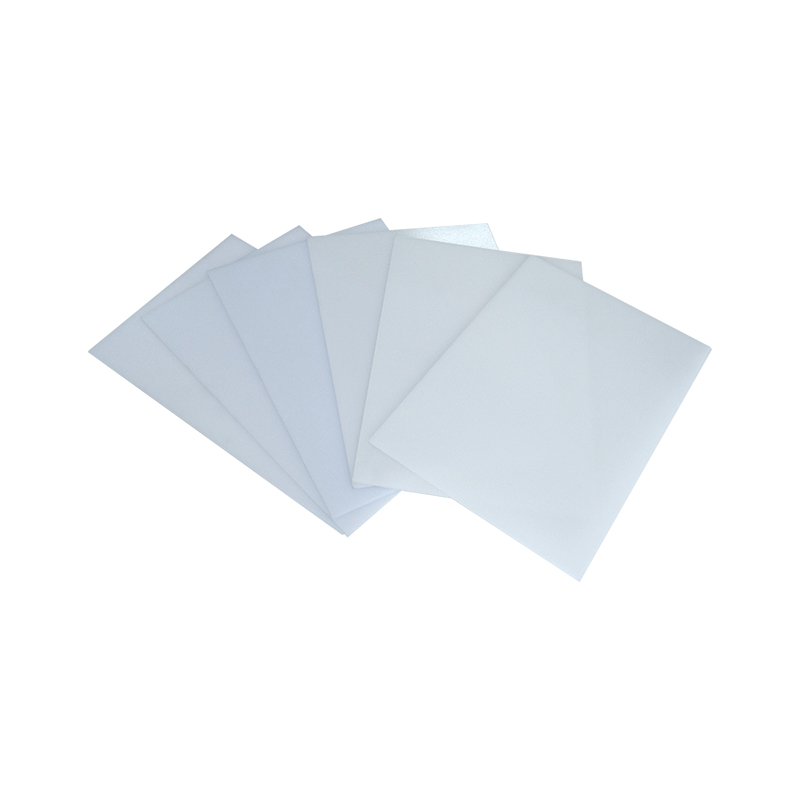ให้ข่าวสารล่าสุดเกี่ยวกับองค์กรและอุตสาหกรรมแก่คุณ
แผ่นโพลีคาร์บอเนตกลายเป็นตัวเลือกยอดนิยมในการก่อสร้าง สถาปัตยกรรม และโครงการ DIY เนื่องจากมีการผสมผสานระหว่างความแข็งแกร่ง ความโปร่งใส และความสามารถรอบด้านที่เป็นเอกลักษณ์ อย่างไรก็ตาม แผ่นโพลีคาร์บอเนตบางแผ่นไม่ได้ถูกสร้างขึ้นมาเท่ากัน โดยกว้างๆ จะแบ่งออกเป็น แผ่นโพลีคาร์บอเนตที่เป็นของแข็ง และ แผ่นโพลีคาร์บอเนตกลวง (หรือหลายผนัง) - การทำความเข้าใจความแตกต่างระหว่างทั้งสองประเภทนี้ถือเป็นสิ่งสำคัญในการเลือกวัสดุที่เหมาะสมสำหรับโครงการของคุณ ไม่ว่าจะเป็นเรือนกระจก หลังคา หรือแผ่นตกแต่ง
1. โครงสร้างและการออกแบบ
ความแตกต่างหลักระหว่างแผ่นโพลีคาร์บอเนตที่เป็นของแข็งและกลวงนั้นอยู่ที่ การออกแบบโครงสร้าง -
-
แผ่นโพลีคาร์บอเนตที่เป็นของแข็ง -
ตามชื่อที่แนะนำ แผ่นทึบเป็นชั้นโพลีคาร์บอเนตที่มีความหนาแน่นเพียงชั้นเดียว มีความทึบแสงหรือโปร่งใสโดยสมบูรณ์ ขึ้นอยู่กับรุ่น และให้ความต้านทานแรงกระแทกสูงเนื่องจากมีโครงสร้างที่ต่อเนื่องกัน -
แผ่นโพลีคาร์บอเนตกลวง -
แผ่นกลวงหรือที่เรียกว่าแผ่นผนังหลายชั้น มีโครงสร้างเซลล์ที่มีหลายชั้นคั่นด้วยช่องว่างอากาศ การออกแบบนี้มีลักษณะคล้ายกับรวงผึ้งหรือท่อคู่ขนานที่ทอดยาวไปตามความยาวของแผ่น การกำหนดค่าทั่วไปได้แก่ โครงสร้างผนังคู่ ผนังสามชั้น หรือหลายผนัง ซึ่งช่วยเพิ่มฉนวนและลดน้ำหนัก
คีย์ Takeaway - Solid sheets are dense and uniform, while hollow sheets are layered with internal air pockets for added insulation and lightweight properties.
2. น้ำหนักและการจัดการ
-
แผ่นแข็ง - Solid polycarbonate sheets are heavier due to their dense structure. Handling large panels can be cumbersome, especially in roofing or wall applications.
-
แผ่นกลวง - The hollow design significantly reduces weight, making these sheets easier to transport, handle, and install. They are ideal for large-area applications where minimizing structural support is necessary.
คีย์ Takeaway - Hollow sheets are lighter, easier to handle, and can reduce the overall weight load on supporting structures.
3. ฉนวนกันความร้อน
ฉนวนกันความร้อนถือเป็นข้อพิจารณาที่สำคัญ โดยเฉพาะอย่างยิ่งในด้านหลังคา ช่องรับแสง และเรือนกระจก
-
แผ่นแข็ง - Solid polycarbonate provides limited thermal insulation. Heat can transfer more easily through a dense layer, which might result in higher interior temperatures during summer or heat loss during winter.
-
แผ่นกลวง - The air pockets in hollow sheets act as a thermal barrier, significantly improving insulation. Multi-wall sheets reduce heat transfer, helping maintain stable interior temperatures, reduce energy costs, and increase comfort.
คีย์ Takeaway - Hollow sheets are better for applications where thermal insulation is critical.
4. การส่งผ่านแสง
แผ่นทั้งสองประเภทยอมให้แสงส่องผ่านได้ แต่คุณสมบัติทางแสงแตกต่างกัน:
-
แผ่นแข็ง - Solid polycarbonate sheets offer higher clarity and can transmit up to แสงธรรมชาติ 90% ทำให้เหมาะสำหรับการใช้งานที่ต้องการความโปร่งใสสูงสุด เช่น หน้าต่างหรือกล่องแสดงผล
-
แผ่นกลวง - Hollow sheets have slightly lower light transmission due to their layered structure, typically between 60–80% ขึ้นอยู่กับความหนาของผนังและจำนวนชั้น พวกมันกระจายแสงซึ่งสามารถลดแสงสะท้อนและสร้างแสงสว่างที่นุ่มนวลขึ้นในพื้นที่ภายในอาคารหรือเรือนกระจก
คีย์ Takeaway - Solid sheets provide clearer light, while hollow sheets offer diffused, softer lighting.
5. ความแข็งแกร่งและความต้านทานแรงกระแทก
โพลีคาร์บอเนตมีชื่อเสียงในด้านความต้านทานแรงกระแทก แต่ความหนาและโครงสร้างส่งผลต่อประสิทธิภาพ:
-
แผ่นแข็ง - Solid polycarbonate offers superior impact resistance because the material is continuous and dense. It is highly suitable for applications exposed to high physical stress, such as protective barriers, security panels, and machine guards.
-
แผ่นกลวง - Hollow sheets are still impact-resistant but less so than solid sheets of equivalent thickness. Their layered structure distributes force over a wider area but can deform more easily under heavy impact.
คีย์ Takeaway - Solid sheets are stronger for impact-heavy applications; hollow sheets are sufficient for moderate stress environments.

6. ฉนวนกันเสียง
ฉนวนกันเสียงเป็นอีกปัจจัยหนึ่งที่ทำให้แผ่นกลวงมีประสิทธิภาพเหนือกว่าแผ่นทึบ:
-
แผ่นแข็ง - Dense and rigid, solid sheets transmit more sound. They are not ideal for reducing noise levels in urban environments.
-
แผ่นกลวง - The air pockets in hollow sheets act as sound barriers, reducing external noise transmission. Multi-wall sheets are particularly effective in greenhouses, patio covers, or indoor partitions where noise reduction is desired.
คีย์ Takeaway - Hollow sheets offer better acoustic insulation due to their multi-layered, air-filled design.
7. ป้องกันรังสียูวีและทนต่อสภาพอากาศ
แผ่นทั้งสองประเภทมักมาพร้อมกับการเคลือบป้องกันรังสียูวี:
-
แผ่นแข็ง - Solid polycarbonate sheets with UV coating resist yellowing, fading, and degradation under prolonged sun exposure.
-
แผ่นกลวง - Hollow sheets also feature UV protection, often on one or both sides, to prevent sunlight damage to the sheet and interior spaces. UV protection is critical in greenhouses and outdoor roofing applications.
คีย์ Takeaway - Both types are UV resistant, but checking the coating specifications is important for long-term outdoor performance.
8. ความยืดหยุ่นและการดัดงอ
-
แผ่นแข็ง - Solid polycarbonate is relatively rigid. It can be cold-bent to a limited radius, but excessive bending can crack or weaken the sheet.
-
แผ่นกลวง - Hollow sheets are more flexible along their length and can be curved more easily. This makes them suitable for curved roofing, canopies, and domed structures.
คีย์ Takeaway - Hollow sheets are better for curved installations; solid sheets are better for flat, rigid applications.
9. การพิจารณาต้นทุน
-
แผ่นแข็ง - Generally more expensive per square meter due to the higher material content and manufacturing process.
-
แผ่นกลวง - Lighter and requiring less material, hollow sheets are typically more cost-effective for large-area installations, offering a balance between performance and price.
คีย์ Takeaway - Hollow sheets offer cost advantages in large projects, while solid sheets justify the higher cost with superior strength and transparency.
10. การใช้งานทั่วไป
แผ่นโพลีคาร์บอเนตที่เป็นของแข็ง -
- หน้าต่างรักษาความปลอดภัยและสิ่งกีดขวาง
- สกายไลท์ที่มีความทนทานต่อแรงกระแทกสูง
- เจ้าหน้าที่รักษาความปลอดภัยอุตสาหกรรม
- แผงป้องกันตัวเครื่อง
แผ่นโพลีคาร์บอเนตกลวง -
- โรงเรือน
- หลังคาและผ้าคลุมลาน
- พาร์ทิชันภายใน
- ห้องอาบแดดและเรือนกระจก
- แผงลดเสียงรบกวน
คีย์ Takeaway - The choice depends on whether strength, insulation, or light diffusion is the priority.
11. การบำรุงรักษาและความทนทาน
แผ่นทั้งสองประเภทดูแลรักษาง่าย สามารถทำความสะอาดได้โดยใช้สบู่อ่อนและน้ำ แต่ควรหลีกเลี่ยงสารเคมีที่รุนแรงหรือเครื่องมือที่มีฤทธิ์กัดกร่อน แผ่นกลวงต้องให้ความสนใจเพื่อป้องกันการสะสมน้ำในช่องระหว่างการติดตั้งซึ่งอาจส่งผลต่อความทนทานเมื่อเวลาผ่านไป
คีย์ Takeaway - Proper cleaning and installation ensure long-term performance for both solid and hollow sheets.
บทสรุป
การเลือกระหว่าง แผ่นโพลีคาร์บอเนตที่เป็นของแข็งและกลวง ขึ้นอยู่กับข้อกำหนดเฉพาะของโครงการของคุณ:
- ใช้ แผ่นโพลีคาร์บอเนตที่เป็นของแข็ง เมื่อต้องการความแข็งแรง ความใส และการต้านทานแรงกระแทกสูงสุด
- เลือก แผ่นโพลีคาร์บอเนตกลวง สำหรับฉนวนกันความร้อนและเสียง การจัดการน้ำหนักเบา และการครอบคลุมพื้นที่ขนาดใหญ่ที่คุ้มค่า
ทั้งสองประเภทมีความอเนกประสงค์ ความทนทาน และต้านทานรังสียูวี ทำให้แผ่นโพลีคาร์บอเนตเป็นโซลูชั่นที่เชื่อถือได้สำหรับการก่อสร้างสมัยใหม่และโครงการ DIY เมื่อเข้าใจความแตกต่าง คุณจะสามารถตัดสินใจอย่างมีข้อมูลและสมดุลได้ ความแข็งแรง ความเป็นฉนวน ความสวยงาม และราคา สำหรับการสมัครของคุณ













